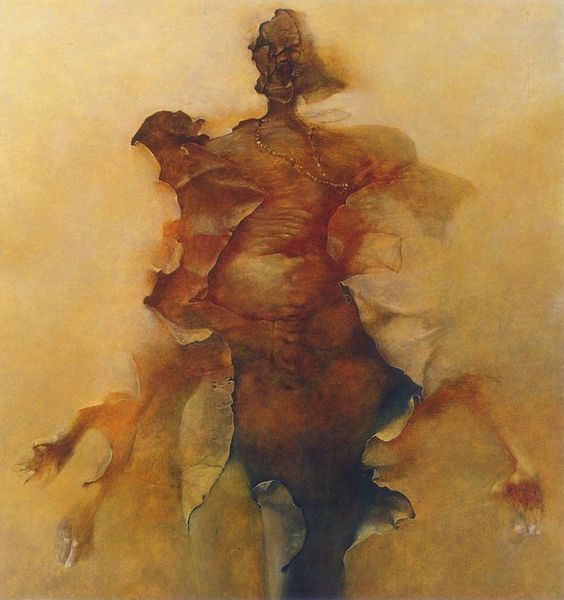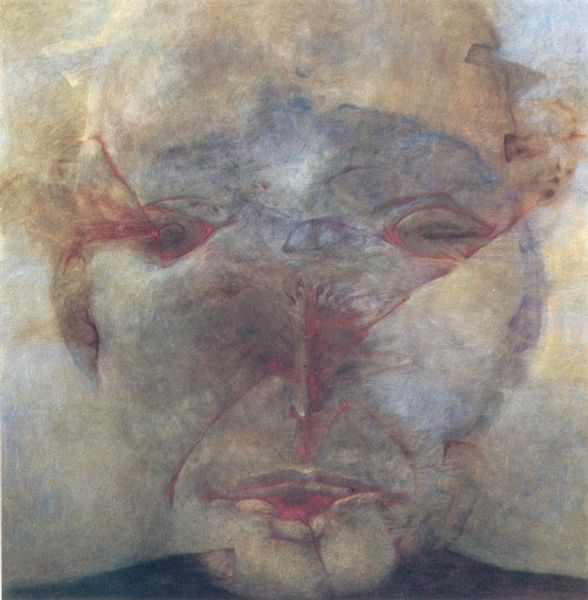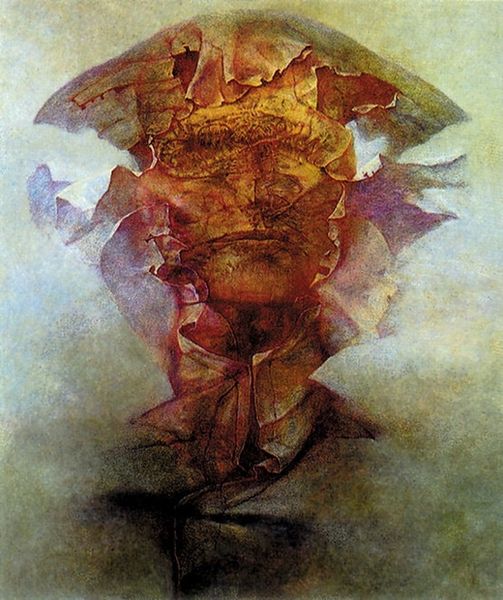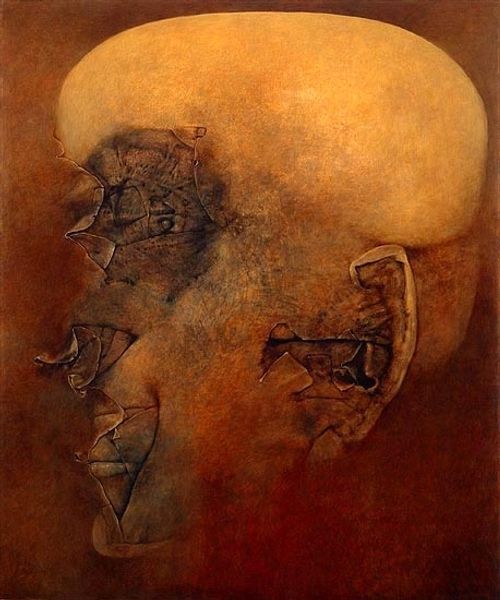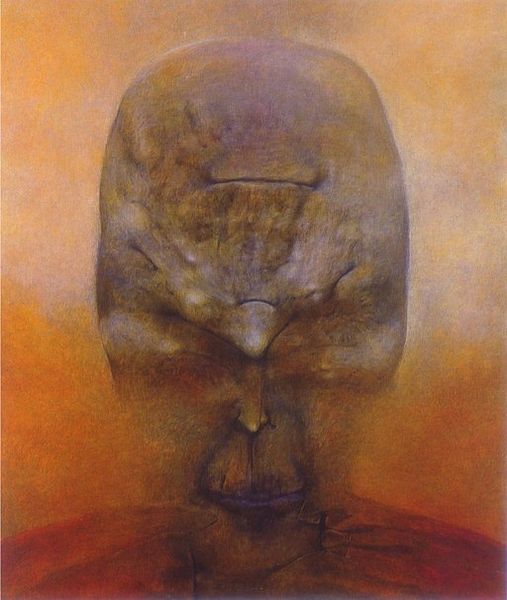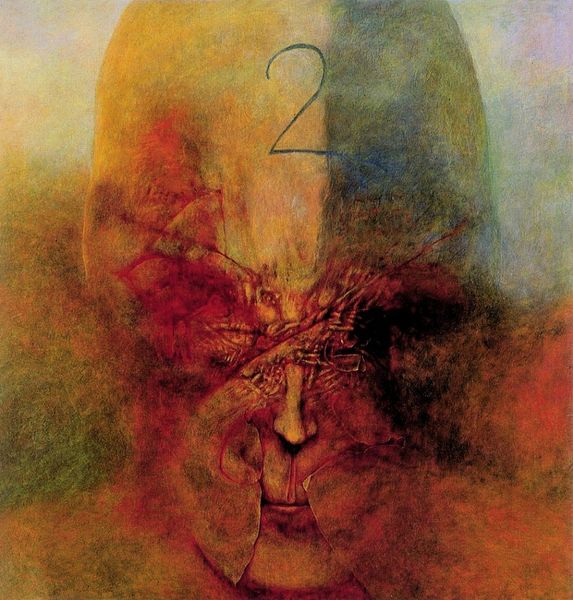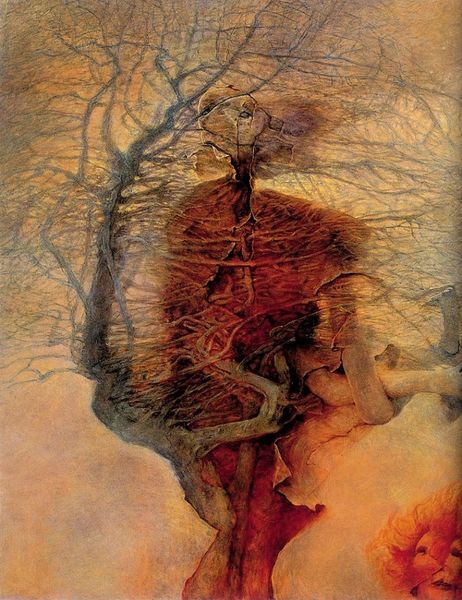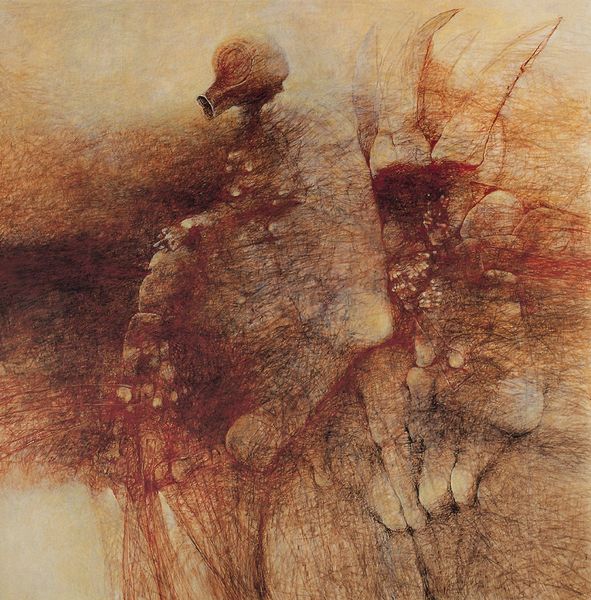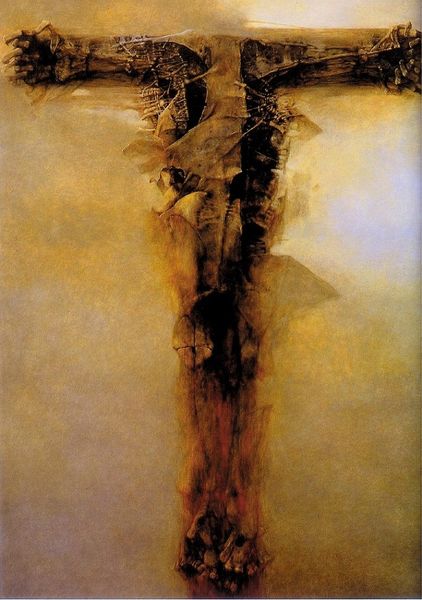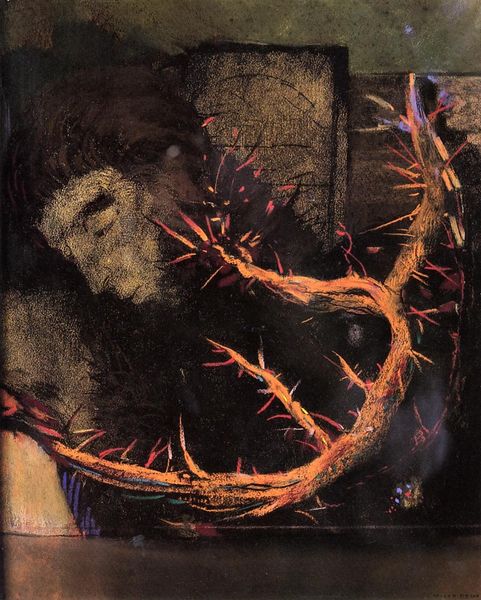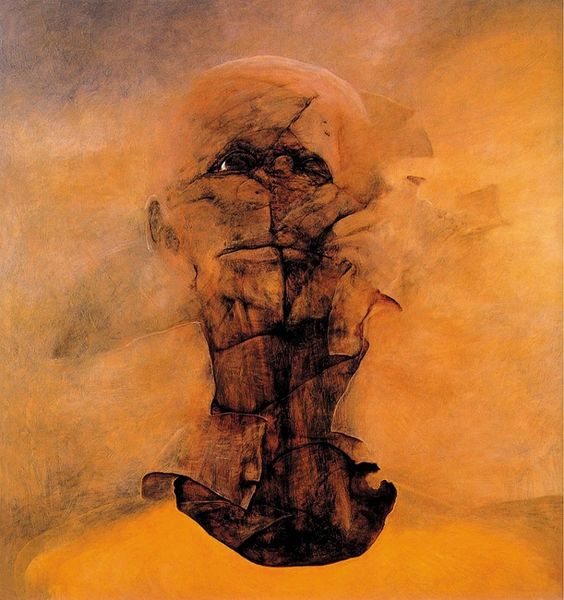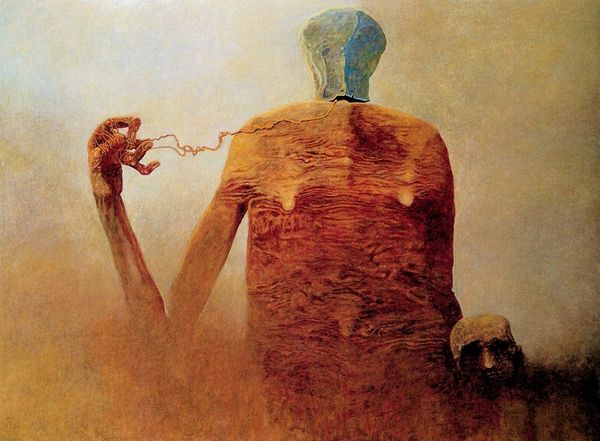
painting, oil-paint, impasto
#
organic
#
painting
#
oil-paint
#
mannerism
#
figuration
#
impasto
#
expressionism
#
matter-painting
#
abstraction
#
symbolism
#
erotic-art
Copyright: © The Historical Museum in Sanok (Poland) is the exclusive owner of copyrights of Zdzisław Beksiński's works.
Curator: This unsettling image is an Untitled piece by Zdzislaw Beksinski, crafted with oil paint and displaying the techniques of impasto. Editor: Visceral. That's the first word that comes to mind. It feels like looking into a wound, both deeply personal and disturbingly exposed. Curator: Yes, the application of the impasto technique seems quite intentional here. The layered paint adds literal depth, drawing the viewer into this cavernous interiority. It has a clear organic quality. Editor: It’s hard to ignore the fleshy tones and the texture, which is built up layer upon layer, like scar tissue or decomposing matter. What kind of support did Beksinski use, do you know? Was he considering that aspect of its making and longevity? Curator: Unfortunately, details regarding the support or canvas itself are not widely documented. What strikes me are the echoes of Mannerist and Symbolist sensibilities at play. Beksinski uses abstraction to speak to the symbolism within the human condition, using his unique figurations. Editor: Perhaps that’s why I keep seeing it as something corporeal, not purely abstract, but representing the decay and reformation. I keep getting caught on that fleshy matter, like something in process. Do we know anything about Beksinski's studio practice and if the process has symbolic meanings? Curator: He favored working at night, creating these dreamlike landscapes or figures in a state of heightened imagination. One interpretation could suggest Beksinski presents us with a reflection of our mortality, something universal but intensely personal. The organic forms within seem caught between genesis and ruin. Editor: And all accomplished with just oil and impasto. The layering mirrors the symbolic significance you describe. It makes you think about what lasts—and what transforms, how what we leave behind may evolve into entirely different entities. Curator: It definitely evokes a sense of the sublime, doesn't it? A simultaneous feeling of attraction and horror. The eternal return in art, and life, always seems like the way forward. Editor: Absolutely. Beksinski challenges us to consider what endures, and how new forms and significances can emerge from what remains. It's a strangely hopeful interpretation of a very unsettling image.
Comments
No comments
Be the first to comment and join the conversation on the ultimate creative platform.
